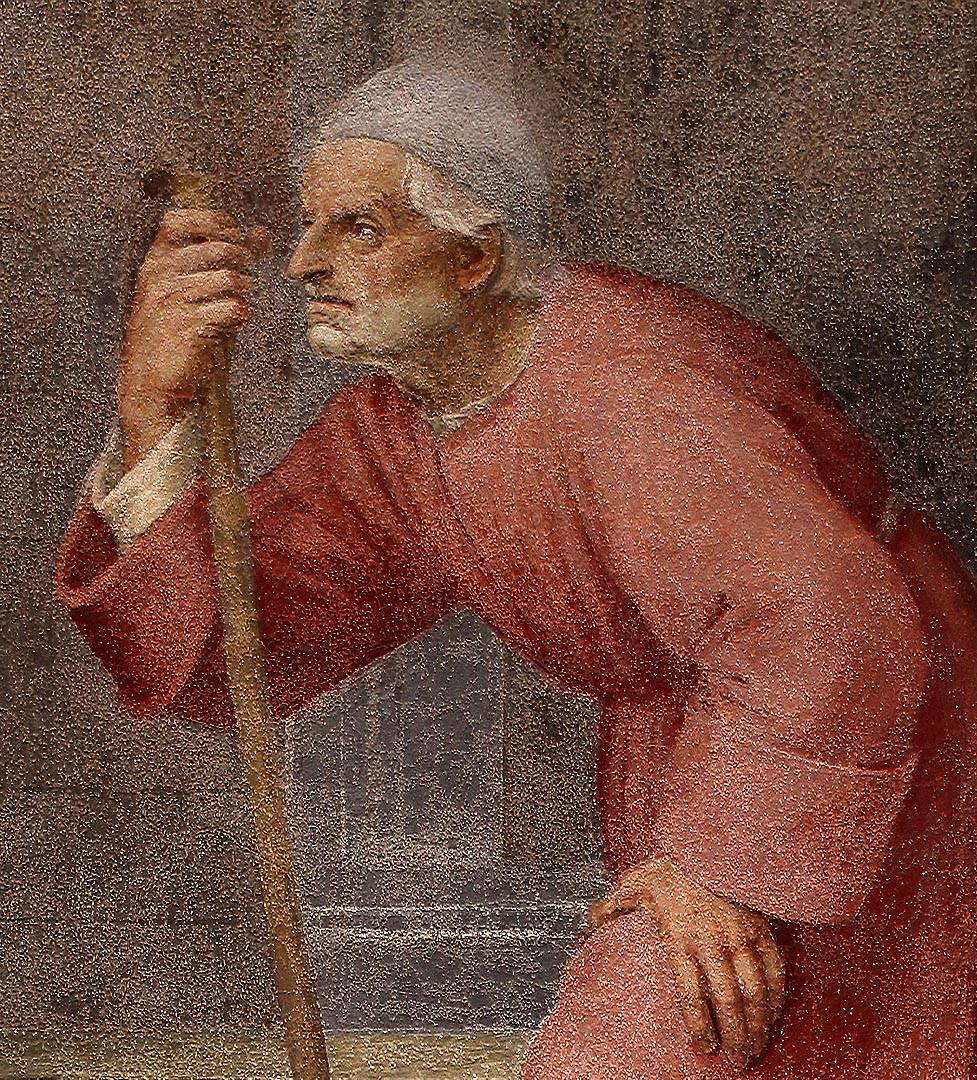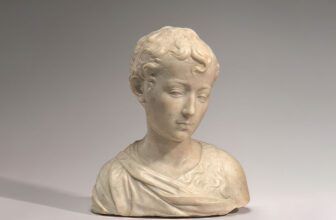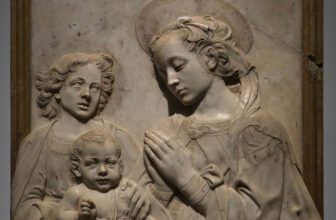
The Most Famous Sculptures by Andrea della Robbia
In the golden age of the Italian Renaissance, when art blossomed in every piazza and chapel from Florence to Venice, one name stood out in the realm of sculpture, not through the grandeur of bronze or the raw power of marble, but through color, clarity, and a uniquely luminous glaze: Andrea della Robbia.
Born in 1435 in Florence, Andrea was destined to carry forward a family tradition, yet he would transcend it with his own brilliance. He was the nephew and heir of Luca della Robbia, the pioneer of glazed terracotta. Under Luca’s mentorship, Andrea not only preserved the delicate art of glazed sculpture but elevated it, blending innovation with piety, color with composition, and humility with artistic excellence.
What is Andrea della Robbia Known For?
Andrea della Robbia is best known for his glazed terracotta sculptures, a medium that distinguished the Della Robbia family from their contemporaries. While most sculptors of the time focused on marble or bronze, the Della Robbias perfected a technique using tin-glazed terracotta, producing works that were durable, vivid, and richly colored, with an ethereal glow that defied the passing of centuries.
Andrea’s sculptures are recognizable by their bright blues, serene whites, fresh greens, and occasional golds, often applied to sacred themes: Madonnas, saints, cherubs, and scenes from the Bible. The hallmark of his style lies in the way he brought warmth and humanity to religious figures, combining Renaissance naturalism with spiritual grace.
The Signature Technique: How Did Andrea Della Robbia Make His Sculptures?
Andrea inherited the secrets of glazed terracotta from his uncle Luca, who invented the technique in the early 15th century. The process began with the modeling of figures in clay, often crafted in sections. Once sculpted, the pieces were allowed to dry before being coated in a tin-based glaze, a process that gave the sculptures their distinct, glossy appearance.
The white glaze, symbolizing purity, was typically used for faces and hands. The deep cobalt blue, often used for backgrounds or garments, became a signature of the Della Robbia workshops. Unlike painted frescoes, these glazes would not fade over time; they remained vibrant for centuries, making them ideal for architectural use, adorning portals, altars, and walls.
Andrea refined this process by introducing a greater variety of colors and using more elaborate compositions. He often combined sculptural figures with painted or relief floral garlands, especially cherubic infants and fruit motifs that brought a touch of joy and nature to sacred scenes.
The Most Famous Sculptures by Andrea della Robbia
Andrea della Robbia’s workshop produced hundreds of works, many of which still grace Italian churches, hospitals, and museums around the world. Among his most famous pieces are:
1. The Madonna and Child with Angels (various versions)
Andrea created multiple interpretations of the Madonna and Child, each suffused with tenderness and human emotion. Often framed by white roses, laurel, or fruit garlands, these reliefs typically feature gentle, youthful Madonnas cradling the infant Christ. A well-known example can be seen at the Ospedale degli Innocenti in Florence.
2. Tondi of Infants – Ospedale degli Innocenti, Florence
Possibly Andrea’s most iconic contribution is a series of terracotta tondi (circular reliefs) featuring swaddled infants that decorate the façade of Brunelleschi’s Ospedale degli Innocenti. These babies, each unique in posture and expression, are emblematic of the hospital’s mission to care for abandoned children and reflect a new Renaissance sensitivity to childhood and emotion.
3. The Resurrection – San Giovanni Fuorcivitas, Pistoia
A monumental masterpiece, Andrea’s “Resurrection” relief in Pistoia is a stunning depiction of Christ rising triumphantly from the tomb, flanked by awestruck Roman soldiers. The detailing, composition, and chromatic harmony in this piece exemplify Andrea’s ability to convey drama and divinity in equal measure.
4. Altarpiece of the Madonna della Cintola – La Verna
This monumental altarpiece, located in the Franciscan sanctuary of La Verna, portrays the Virgin giving her belt to Saint Thomas amid a heavenly crowd. Its complexity and the interplay of sculpture and architecture mark one of Andrea’s finest mature works.
5. Tabernacle of the Eucharist – Santa Maria in Gradi, Arezzo
A profound theological statement captured in ceramic, this tabernacle integrates Christ’s sacrifice with eucharistic symbolism. Its bold visual clarity and compositional symmetry make it a spiritual centerpiece in its church.
Where Are Andrea della Robbia’s Sculptures Located Today?
Though many of Andrea della Robbia’s works remain in their original settings, adorning churches, monasteries, and public buildings across Tuscany and central Italy, his influence has spread globally. Here are some key locations:
1. Florence, Italy
Ospedale degli Innocenti: Infants in tondi on the façade.
Basilica di San Lorenzo: Several altarpieces and decorative reliefs.
Museo Nazionale del Bargello: Hosts a significant collection of Della Robbia glazed terracotta.
2. Arezzo and Surroundings
Santa Maria in Gradi: Home to the Tabernacle of the Eucharist.
La Verna Sanctuary: The grand Madonna della Cintola altarpiece.
3. Pistoia
San Giovanni Fuorcivitas: Location of “The Resurrection” relief.
4. Rome
Several churches and private collections in Rome contain Andrea’s devotional works, particularly small Madonnas or narrative scenes.
5. Museums Worldwide
The Louvre, Paris: Holds some reliefs attributed to Andrea’s workshop.
The Victoria and Albert Museum, London: Hosts an impressive selection of glazed terracottas, some from the Della Robbia circle.
The Metropolitan Museum of Art, New York: Exhibits several smaller devotional reliefs attributed to Andrea or his followers.
How Much Are Andrea della Robbia’s Sculptures Worth Today?
The value of an original Andrea della Robbia sculpture in today’s art market can be immense, depending on the work’s size, condition, provenance, and subject. Due to their rarity, historical significance, and artistic excellence, these works are highly prized by collectors and museums alike.
Small-scale devotional reliefs (e.g., Madonna and Child busts) that are authenticated can fetch $500,000 to $1.5 million at auction.
Larger works, especially those with historical provenance or ecclesiastical significance, can command prices upwards of $5 million or more.
In 2010, a Madonna and Child by the Della Robbia workshop sold at Sotheby’s for over $1.4 million.
However, many of Andrea’s works are considered national treasures in Italy, meaning they are not for sale and cannot legally leave the country. These pieces are preserved in situ or within Italian museum collections under strict cultural heritage laws.
Andrea della Robbia Legacy and Influence
Andrea della Robbia’s career spanned over five decades, during which he managed one of the most prolific workshops in Renaissance Italy. His legacy continued through his son Giovanni della Robbia, who introduced even more color and narrative detail into glazed terracotta.
But it was Andrea who refined and standardized the Della Robbia style, fusing the decorative and the devotional, the architectural and the sculptural. His ability to mass-produce beautiful religious art without sacrificing quality made his work accessible to a broader audience, ensuring that sacred beauty wasn’t limited to the elite.
His influence can be seen not just in art, but in the very aesthetic identity of Renaissance Florence, where his blue and white creations seem to shine with celestial permanence amid the aging stones.
Andrea della Robbia in the Modern Imagination
Today, Andrea della Robbia’s works continue to captivate art lovers, historians, and collectors. There is something otherworldly about his sculptures, something that transcends time. They carry the aura of their age: a Renaissance of light, faith, and harmony.
His ability to depict innocence, serenity, and divine beauty in such a tactile, enduring medium reminds us that great art doesn’t need to scream. Sometimes, it glows, quietly, eternally, from the walls of a Florentine hospital or the altar of a Tuscan chapel.
Whether admired in the hushed halls of the Bargello or glimpsed above the colonnade of a Renaissance portico, Andrea della Robbia’s art speaks with the voice of a true master, one who believed that beauty could be both spiritual and accessible, fleeting and eternal.
In the heart of the Renaissance, Andrea della Robbia gave clay a soul, and glazed it in the light of heaven.




